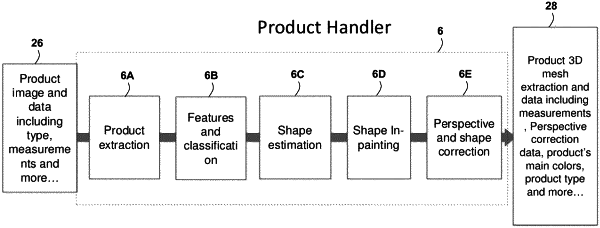| CPC G06T 11/60 (2013.01) [G06Q 30/0643 (2013.01); G06F 3/0482 (2013.01); G06N 20/00 (2019.01); G06N 20/20 (2019.01); G06T 3/40 (2013.01); G06T 2200/24 (2013.01)] | 20 Claims |

|
1. A system comprising:
one or more processors; and
one or more non-transitory computer-readable media storing computing instructions that, when executed on the one or more processors, cause the one or more processors to perform operations comprising:
processing a first digital image by identifying each portion of a first subject matter in the first digital image;
processing a second digital image by at least:
interpolating shapes for hidden areas of a second subject matter in the second digital image, wherein the shapes for the hidden areas compromise one or more regions in the second digital image obstructed by one or more objects in the second digital image;
filling in the one or more regions with color or texture in the second digital image located near the one or more regions in the second digital image; and
overlaying at least one first region of the one or more regions, as filled in, with another portion of the second subject matter that is not hidden in the second digital image;
generating a composite image that depicts the first subject matter combined with the second subject matter having the one or more regions filled in and having the at least one first region overlaid; and
causing the composite image to be displayed as a virtual presentation.
|